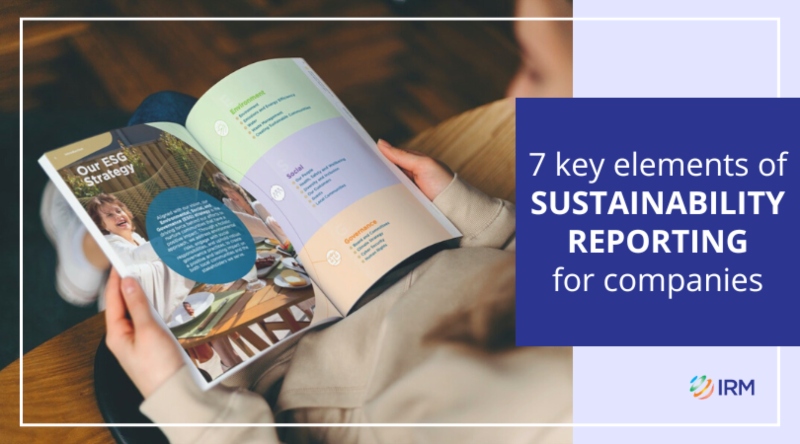
- Establish clear objectives and conduct materiality assessment for your sustainability report.
- Gather data and metrics then develop a reporting framework.
- Review your draft before having it designed and published.
As you may already know, the Australian government aims to implement mandatory climate reporting for businesses in 2024. Listed companies will be required to adhere to newly established international sustainability reporting standards in order to obtain capital, according to the ASX. This impending regulation underscores the growing importance of sustainability reporting in today's market.
Crafting a robust sustainability report is not only a regulatory requirement but also an opportunity for your company to showcase your commitment to environmental, social, and governance (ESG) principles. Consider these steps to help your business navigate the creation of your sustainability reports.
1. Establish clear objectives
Define the purpose and scope of your sustainability report. Clarify the ESG aspects that are significant to your operation and stakeholders. For example, if you’re a mining company, you might focus on reducing carbon emissions and promoting community engagement. If you’re a technology firm, you might prioritise diversity and data privacy.
 Establish clear objectives for your sustainability report.
Establish clear objectives for your sustainability report.
2. Conduct materiality assessment
Identify the most significant ESG issues that impact your company and stakeholders. Conduct stakeholder consultations, surveys, and analysis to prioritise material topics. If you’re in retail, you might discover that reducing plastic waste and ensuring fair labour practices are paramount concerns for customers and investors. If you're in biotech, ensuring ethical sourcing of genetic materials and minimising the environmental footprint of laboratory operations might be your key points.
3. Gather data and metrics
Collect relevant data and metrics to measure your company's performance against sustainability goals. Utilise internal records, industry benchmarks, and third-party assessments to ensure accuracy and credibility. For instance, if you’re a manufacturing firm, you might want to track energy consumption, waste generation, and employee safety incidents.
4. Develop a reporting framework
Select a recognised reporting framework such as the Global Reporting Initiative (GRI) or the Sustainability Accounting Standards Board (SASB) standards. Tailor the framework to suit your company's industry, size, and specific sustainability priorities. Adhering to established frameworks enhances comparability and transparency in reporting.
 Develop a reporting framework for your sustainability report.
Develop a reporting framework for your sustainability report.
5. Draft your sustainability report
Compile the gathered data and insights into a cohesive narrative. Clearly communicate your company's sustainability performance, goals, initiatives, and progress. Use visuals such as charts, graphs, and infographics to enhance readability and comprehension. Perhaps if you’re a hospitality enterprise, you might highlight initiatives to reduce food waste and promote responsible tourism in your report.
6. Review and verify
Engage internal and external stakeholders, including sustainability experts and auditors, to review your draft report. Ensure accuracy, completeness, and adherence to reporting standards. Verification from independent parties adds credibility and confidence in your report's integrity.
7. Design and publish
Enlist the expertise of graphic designers with investor relations background to design a visually appealing and accessible report. They will incorporate branding elements, imagery, and interactive features to engage your readers effectively, whether in print or online formats. Publish the sustainability report on your company website and distribute it to stakeholders through various channels, like email and social media.
 Design your sustainability report with the help of IR experts.
Design your sustainability report with the help of IR experts.
Ace your sustainability reporting
Creating a sustainability report is a process that requires careful planning, data analysis, and stakeholder engagement. Following these steps enables your company to develop impactful reports that demonstrate your commitment to sustainability and accountability.
Design pros at your service
Let go of the hassles of design and leave all the work to us. Your sustainability report will have an engaging look that effectively communicates your message. We'll even project manage your report for you – how good is that?
Try our quote for comparison here or check our FAQs. Contact us for more info on +61 2 8705 5444 or clientrelations@irmau.com.
Related blog posts:
How to communicate sustainability on your website
How ESG on your website creates value for your business
Lessons from ASX webinar: ESG reporting for small and mid-cap companies

 Online Investor Engagement Specialists
Online Investor Engagement Specialists



